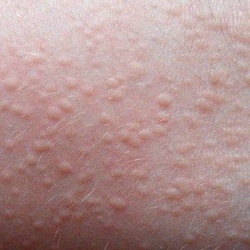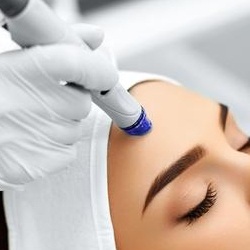

Microneedling is a method that some dermatologists use to treat different skin conditions. The technique involves using multiple tiny, sterile needles to puncture the skin and cause physical trauma.

Microneedling increases the production of collagen and other healing factors by causing trauma to the skin.
Collagen is an essential protein that helps keep the skin looking youthful, with a firm, smooth, and stretchy texture.
Aging causes the decline of collagen in the skin, contributing to wrinkles and other signs of aging.
Skin can also lose collagen due to injuries, such as acne scarring, stretch marks, or other scars.
It is important to realize that microneedling is not a quick fix, as it involves the growth of new skin. It can take several months for a person to see the full results of the procedure.
د.
The medical community generally considers microneedling to be safe and effective, but there are still some risks.
The primary risk is skin irritation after the procedure. Other side effects could include:
Bleeding is an uncommon reaction to microneedling, though it may be more likely to occur after a deeper treatment.
Bleeding may also be more of a risk for people who have bleeding disorders or who are taking blood-thinning medications. It is important to disclose this information to a doctor before receiving this treatment.
There is also a risk of more serious side effects, including:
Some devices involve additional risks. Those that use energy or heat can increase the likelihood of burns.
Finally, some people are not candidates for microneedling treatment, including those with:
Seeing a dermatologist or medical skin care professional who is experienced in these types of procedures will help minimize the risks.